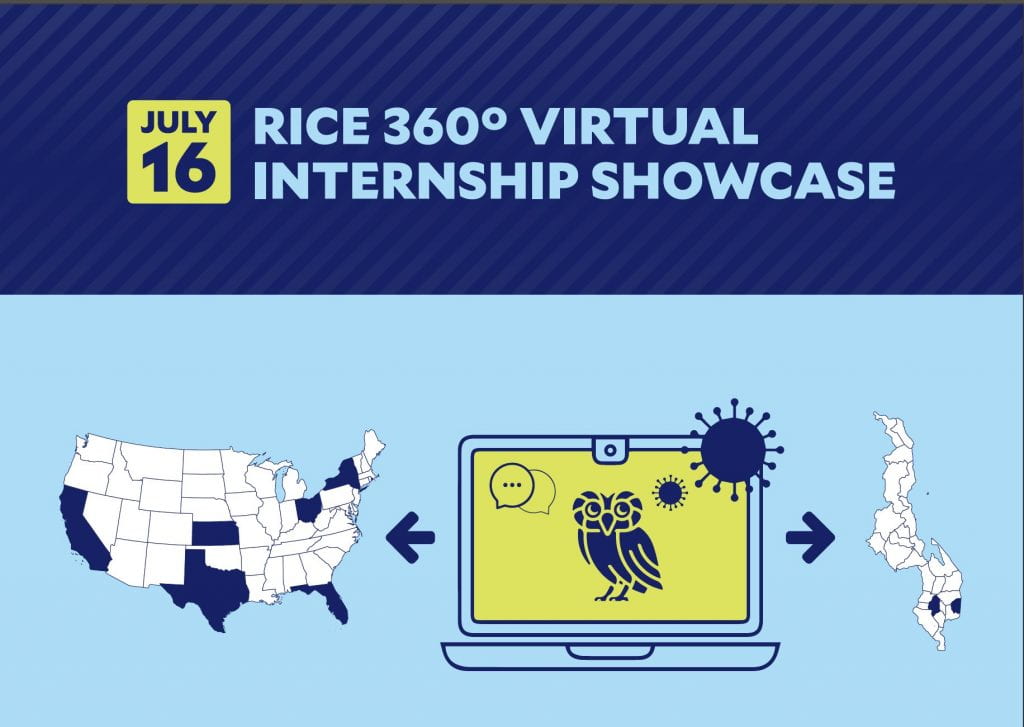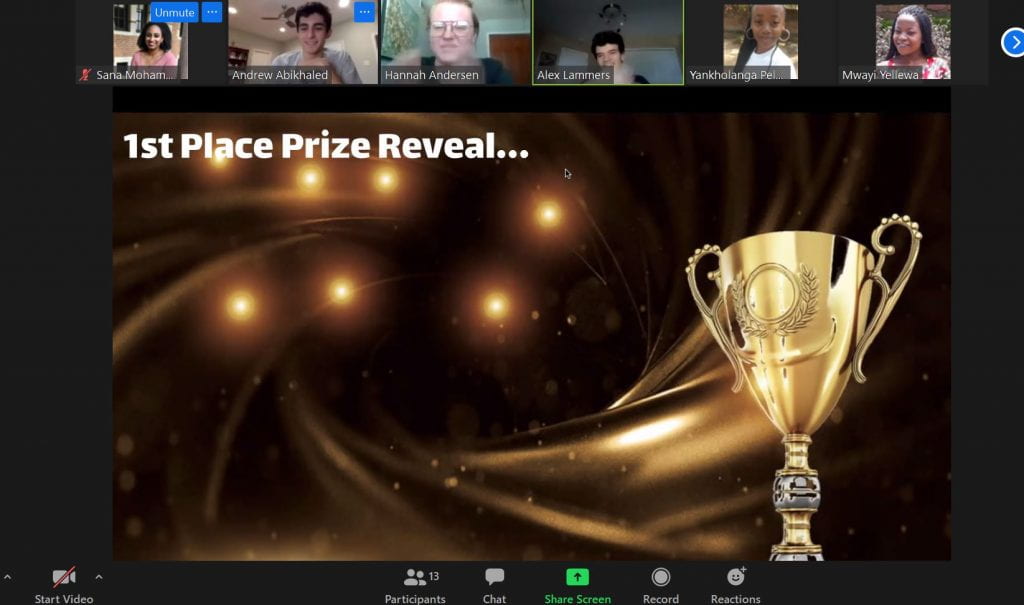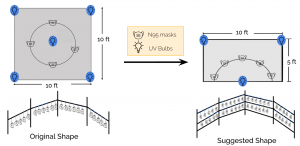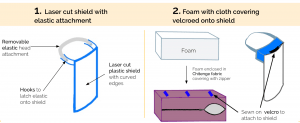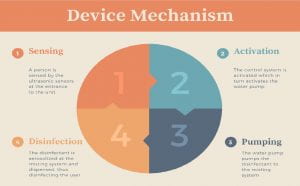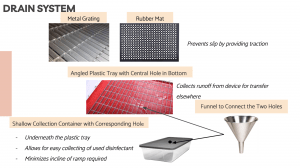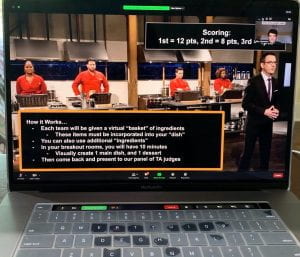I grew up in Prosper, TX, a small town where they prioritized pep rallies over AP classes, and where my public high school principal was more than happy to lead prayers for the Christian student club while simultaneously giving students a hard time when they tried to start a Gay Straight Alliance club. I love my family and my home, but my values and interests weren’t aligned with the “Prosper way,” and I felt ostracized. I knew I needed to leave my community to find the kind of community I craved, one that valued diversity, equity, and knowledge. Fortunately, I found this community at Rice University where I am studying bioengineering and global health.
Last summer I had the privilege of traveling to Malawi, Africa as a Rice 360° intern. I spent several weeks living in Kabula Lodge in Blantyre and working in the Polytechnic Design Studio alongside some very wonderful, kind, intelligent people.
In Malawi, I expected my attention and learning to be focused on the differences between my home country and my surroundings. But, what struck me more profoundly than the differences were the similarities. I realized that my Malawian and Tanzanian teammates and friends were just like me. We laughed at the same things, complained about the same types of classes, and worked towards a common goal of using our engineering skills to serve those who need us most. There is an unmistakable sameness to be felt when you work and laugh alongside people, and this sameness has a way of rooting itself into your heart even when you know that the rest of the world probably sees you and your teammates as being very different.
The time I spent in Malawian hospitals taught me so much about inequality, and those lessons have been coming back to me in waves as the events of the last several months have unfolded on the news.
2020 has unquestionably been a year for the history books. The world has had the wind knocked out of it by a global pandemic. As if that wasn’t shocking enough, all fifty states and many countries across the world had week-long protests after the tragic and unjust murder of George Floyd by police officers was caught on video. The #BlackLivesMatter movement is demanding nationwide police reform, and in ways that I hope will become clear through this blog, this movement is not unconnected to the world of global health.
This year I am honored to serve the Rice 360° Institute for Global Health as a TA for the virtual summer internship. It’s an opportunity to reflect on my experiences and their relevance in the present.
Rice 360° embodies my core values and beliefs: Diversity. Compassion. Advocacy. Outreach.
“As we write this, we are experiencing and witnessing challenging times. The murders of Black Americans, including George Floyd, Ahmaud Arbery, and Breonna Taylor have led to massive protests and demands for justice. At the same time, the COVID-19 pandemic is challenging the entire world, but taking a much greater toll on marginalized communities in the US and all around the world.
As a global health team working towards equity, we know it is our responsibility to acknowledge, understand, and address racism and injustice. … We are all in this world together. We must use this troubling time as an inflection point – in our team and in our work – to personally do all that we can to move toward lasting equity, for everyone.”
This message was written by Rice 360° directors Dr. Rebecca Richards-Kortum and Dr. Maria Oden, two of the most inspiring women I have ever met. I am lucky and honored to be employed by an organization that acknowledges the racism our country faces and that supports #BlackLivesMatter.
On June 10th, Rice 360° participated in #ShutDownSTEM. We spent the day educating ourselves about systemic racism and the inequities that exist in our world. As I committed myself to learning, I kept thinking about what I had learned the previous summer in Malawi: It’s important to recognize sameness in those who appear different from us, both outside the borders of the US and within our own country. As I continued reading up on racial inequality in the US, my research pointed to the colonization and slavery that began hundreds of years ago as sources of the inequity that blind us to our fundamental sameness today. I thought about how racism continues to produce health disparities as well as something called the Single Story of Africa. I hope this blog inspires you to actively educate yourself and to use your voice to strive for positive change.
The Danger of A Single Story
If you have a spare 20 minutes, I cannot recommend enough watching the TED Talk by novelist Chimamanda Adichie. It’s called The Danger of a Single Story. To this day, this TED talk goes down as one of the most moving things I have ever seen. In her speech, Chimamanda Adichie talks about what she calls the Single Story of Africa. When she grew up and moved from Nigeria to the US for college, she realized that people in the US hold a single story of Africa in their minds: a story of poverty, disease, and simplicity. She was confused by this at first. Being the daughter of a professor, she grew up in a middle-class family surrounded by educated, successful people. She realized that our media, our history classes, and our literature have continuously propagated this image of Africa, one that takes an entire, beautiful, rich and diverse continent and boils it down to a single story of catastrophe and suffering.
This single story is a fiction, a tragic, disgraceful remnant of a time when America and Europe disrupted the trajectory of an entire continent that was trending very positively. It’s not surprising that western society invented a single story of a war-torn, impoverished continent to justify its actions.
My time in Malawi taught me that there is NOT a single story of Africa. Africa is a HUGE, incredibly diverse continent. There are 54 countries and 1.2 billion people there who all live different, unique lives. There are rich people, poor people, educated people, farmers, businessmen, big cities, small villages, immigrants, heroes, criminals, politicians, doctors, friends, families. When my bestie from Rice, Nimisha, sends me entertaining Tik Toks made by our Malawian friend and fellow intern Tebogo it challenges the Western perception that Africa contains only rural communities without internet or electricity. When I scroll through Instagram and see the stylish company logos that my Tanzanian friend Cholo has designed, I question the notion that innovation and entrupreurship are specifically western traits. When I’m blown away by the stunning photography posted on my former Malawian teammate Foster’s Facebook page, the weight of all that is neglected by the single story really hits me. By failing to recognize that Africa offers 1.2 billion unique stories instead of one single story, we allow ourselves to continue ignoring our history, and we fail to hold ourselves and our country accountable for the impact that we’ve had on the world – an impact that still affects Black people in America and in Malawi today.
Social Correlates of Health in Malawi
Although my time in Malawi made me value the sense of similarity, there is one difference that sits with me in a heavy way. This difference was seared into my mind last summer. The difference between the hospitals in Malawi and those in the US revealed itself to me as one of the greatest injustices of the world.
I witnessed major health disparities in Malawi and thought about their relationship with social correlates of health.
Social correlates of health – the conditions in which people are born, grow, work, live, and age, and the wider set of forces and systems shaping the conditions of daily life
According to the definition above, social correlates of health are the conditions of our lives, usually conditions that we have little control over. I’ll use a personal example to illustrate the differences between a few social correlates of health in the US versus Malawi. When I was one year old, I got an ear infection that led to pneumonia. While I was being treated for pneumonia in the hospital, I contracted rotavirus. I ended up being hospitalized for three days, got an x-ray to confirm my pneumonia, a spinal tap to rule out meningitis, went through two rounds of antibiotics and received IV fluids to keep me alive. After all of that medical attention, I was able to leave the hospital after three days and make a full recovery. Two decades later, I’m completely healthy, and I don’t even remember that hospital visit (although of course my parents say it was a very scary time for them, especially when I had to get that spinal tap!).
This story highlights the social correlates that affected my health outcome. The biggest one is that I was born in the US. Hospitals in the US are among the best in the world. My doctors had access to x-rays and antibiotics. There was never any question of whether or not the treatment I needed would be accessible to me. Consequently, the rate of children under the age of five dying of pneumonia in the US is 3 out of every 100,000. In Malawi, the rate of children under five dying of pneumonia is 149 out of every 100,000. That’s 50 times higher. One study showed that babies with pneumonia in Queen Elizabeth Central Hospital (QECH) in Blantyre, Malawi – the same hospital where I spent so much time last summer – have a one in five chance of dying. When shadowing in QECH I grew attached to tiny, premature babies hooked up to oxygen machines, only to notice that the babies would be gone the next day. I knew this was not because the babies had recovered. Pneumonia happens to be the leading cause of death around the world for children under the age of five. Unless you live in the US.
My surroundings and circumstances drove my medical outcome, and they drove the outcomes of all the babies and other patients I encountered in hospitals in Malawi. There are more subtle social correlates of health as well, such as where you live, the pollution in your city, the food your family has access to, the quality of your education, the amount of violence in your neighborhood, the amount of stress in your life, etc. All of these social correlates of health affect the outcomes of populations and individuals. They explain why, despite fundamental human sameness, countries like the US have different health outcomes compared to countries like Malawi.
Sources of Global Inequality; Trajectory Disrupted by Colonialism
I learned in Malawi that people, at the core of their hearts, are all fundamentally the same, and this has driven me to question: Why are health outcomes so different across the world? My online research shows that health inequality is a function of a nation’s economic success; therefore, it’s important to place Malawi’s history in context when thinking about the country’s economic challenges. Malawi was colonized by the British from 1891-1964. From early on in the 20th century, the people of Malawi opposed British rule, and their attempts to achieve independence were often met with violence and imprisonment. During World War II, Malawians were conscripted to fight for Britain in the war. Malawians resisted the idea of fighting without having their own independence as a nation, and unrest increased. Eventually Malawi achieved independence on July 6th, 1964. That was 56 years ago.
The economic effects of colonialism are directly linked to the inequality broadly seen in Sub-Saharan Africa today. In order to maximize the economic benefits of their rule, colonizers in Sub-Saharan Africa mainly engaged in what’s known as extractive colonialism, where the ruling country takes advantage of a nation’s labor and raw materials without reinvesting in the land or communities. Scholars widely agree that the current economic hardships throughout the region are a result of historical extractive colonialism, which ended in Malawi less than 60 years ago.
What this says to me is that there are people on the other side of the world who are the same as me in terms of their minds and their hearts, but who suffer poorer health outcomes due to the lingering effects of colonialism.
(Readings on the modern day economic impacts of extractive colonialism can be found here, here, here, here, and here.)
Inequality Exists Within the US, Too
Health disparities do not only impact low-income countries; they impact disenfranchised communities within our own borders, too. To illustrate this, let’s talk about Covid-19. This excerpt comes from a New York Times article:
“In Illinois, 43 percent of people who have died from the disease and 28 percent of those who have tested positive are African-Americans, a group that makes up just 15 percent of the state’s population. African-Americans, who account for a third of positive tests in Michigan, represent 40 percent of deaths in that state even though they make up 14 percent of the population. In Louisiana, about 70 percent of the people who have died are Black, though only a third of that state’s population is.”
The disproportionate burden of disease faced by Black Americans was a reality long before Covid-19. Black people in America are more likely to die of HIV, get cancer, or suffer from strokes than white people. They’re also more likely to suffer from chronic stress, which means they’re more likely to suffer from heart disease earlier in life. Health inequality has been present in the US from the very beginning, and it persists today over 100 years after slavery ended.
These disparities are undeniably a byproduct of racism, classism, and slavery in this country. Black peoples’ lives in 2020 are still impacted by the origin of Black people on this continent: The Transatlantic Slave Trade. Just as extractive colonialism resulted in the economic realities in Sub-Sahran Africa, slavery in the United States has resulted in economic and many other forms of modern inequality.
Tying it All Together
The common thread among all these issues and disparities is us. It’s not enough for us to claim to be not-racist. It’s time to become actively ANTI-racist. Being anti-racist means being a good ally to the Black community by taking actionable steps to recognize racist systems in this country and to advocate for changes that address these issues. This can begin with actions such as donating to nonprofits that support Black communities, signing online petitions calling for change, and contacting our representatives to demand systematic change. (I have attached links at the bottom of the blog to give a helping hand to anyone trying to begin taking these actionable steps.) It’s time to educate ourselves and to use the power of our voices to contribute to positive change in the world.
After my time spent in Malawi and my three years so far at Rice, I have come to believe more strongly than anything else in the fundamental sameness and connectedness of all human beings. To me, this means that inequality is not inherent to human nature, and it can be addressed with empathy, compassion, education, hard work, and the acknowledgement of our history.
We must not overlook health disparities, or any other form of modern inequality. According to the CDC’s definition of health disparities, the inequalities of this world are preventable. Preventable means things don’t always have to be this way. It’s a hopeful term. We have the power to address health disparities and all other forms of inequality and to alter the trajectory of the world. The disparities that persist may not directly be my fault, but as an educated, privileged person I do have the power and the drive and desire to work towards repairing the damage that was done by the forefathers of my country. We can change the future.
Rice 360°’s work lies at the intersection of engineering and advocacy. In this intersection I know that I have found my calling and my home. I will never stop educating myself, and I will never stop advocating for the elimination of preventable disparities in this world. Readers, I challenge you to do the same.
ANTI-RACISM ACTION ITEMS
Where to donate
This is not an exhaustive list, and it is slightly Houston-centric because of my everlasting devotion to the city that has been my home for the last three years.
Texas Organizing Project (TOP) organizes Black and Latino communities in Dallas, Harris, and Bexar counties with the goal of transforming Texas into a state where working people of color have the power and representation they deserve. Led by working families, TOP is involved in direct action, grassroots lobbying, and electoral organizing. In regards to criminal justice reform, TOP regularly fights for the release of incarcerated individuals and is working at the legislative level to reform the bail system, end debtors prison, and hold police accountable.
BlackGirlsCode is a grassroots organization dedicated to exposing girls to opportunities in STEM. They’re based in the Bay Area but are currently working to expand. They hope to provide young and pre-teen girls of color opportunities to learn in-demand skills in technology and computer programming at a time when they are naturally thinking about what they want to be when they grow up.
Pure Justice advocates for changes in the criminal justice system and has fought to improve the overall lives of low income families in Harris County. Through their prison outreach initiatives, “Know Your Rights” workshops, recent COVID-19 community grants, and ongoing bail fund program, Pure Justice provides direct support to Black people in Houston.
The Thurgood Marshall College Fund is an American non-profit organization that supports and represents nearly 300,000 students attending its 47 member-schools that include public historically black colleges and universities (HBCUs), medical schools, and law schools. The TMCF is the nation’s largest organization exclusively representing the Black College Community. TMCF member-schools include the publicly-supported Historically Black Colleges and Universities (HBCUs) and Predominantly Black Institutions (PBIs).
A longer list can be found here! 🙂
How to communicate with your representatives
I’m the first to admit that this is the action item that I’ve struggled with the most lately, but I am actively working to commit myself to doing better in this area!
Introductory Guide to contacting your representatives
This website allows you to input your zip code, identify your representatives’ contact information, and view scripts and talking points among various issues, including civil rights.
Phone script for calling your representatives to tell them to condemn police brutality
Email script for calling your representatives to tell them to condemn police brutality
Furthering your education
Getting educated about Black issues is a lifelong process, and there’s no better day than today to get started! This list includes some readings and videos that I personally have found interesting and enlightening over the last several weeks.
GOOGLE DRIVE FOLDER – Anti-racism resources for white people
https://docs.google.com/document/d/1BRlF2_zhNe86SGgHa6-VlBO-QgirITwCTugSfKie5Fs/mobilebasic?fbclid=IwAR2_aTX_DQ9rHSF6iwY1C6IAOAoLLUzWkP4Gk5YiXFuHg4BHMI-xgHN9dKc&urp=gmail_link
TED TALK – The danger of a single story | Chimamanda Ngozi Adichie
https://www.youtube.com/watch?v=D9Ihs241zeg
WEBINAR – Equity and Social Justice Webinar – Health Disparities and COVID-19
* a personal favorite of mine *
https://www.youtube.com/watch?v=h_GnyjW-VZE
NYT ARTICLE – Black Americans Face Alarming Rates of Coronavirus Infection in Some States
https://www.nytimes.com/2020/04/07/us/coronavirus-race.html
TED TALK – A prosecutor’s vision for a better justice system | Adam Foss https://www.youtube.com/watch?v=H1fvr9rGgSg
TED TALK – We need to talk about an injustice | Bryan Stevenson
https://www.youtube.com/watch?v=c2tOp7OxyQ8
I am incredibly grateful…
For Dr. Ashley Taylor and Dr. Rebecca Richards-Kortum for providing me with invaluable feedback on my original draft of this blog.
For Dr. Tracy Volz for working so closely with me to organize, refine, and polish my writing. Thanks to Dr. Volz’s time, effort, and empathy, I learned so much from this process, both about writing and about myself.
For Nimisha and Alex, who (remotely) watched the documentary 13th with me, who shared valuable articles and videos with the Rice 360° TAs’ groupchat to further our education about racism, and with whom I’ve shared many conversations over the last several weeks which helped me learn to articulate my thoughts about these issues.
For the many friends I made in Malawi last summer, especially the ones who continue to regularly reach out to me and who have stayed a part of my life.
For the Rice 360° Institute for Global Health as a whole and all the amazing, wonderful people who work there, for being an institute that proudly advocates for change and stands up for what is right.
